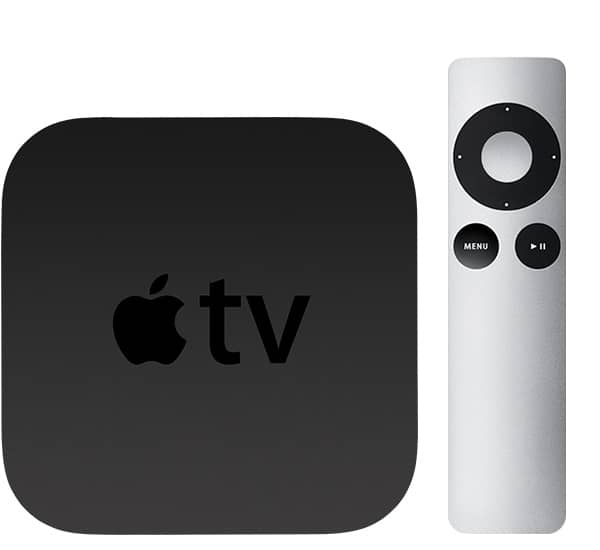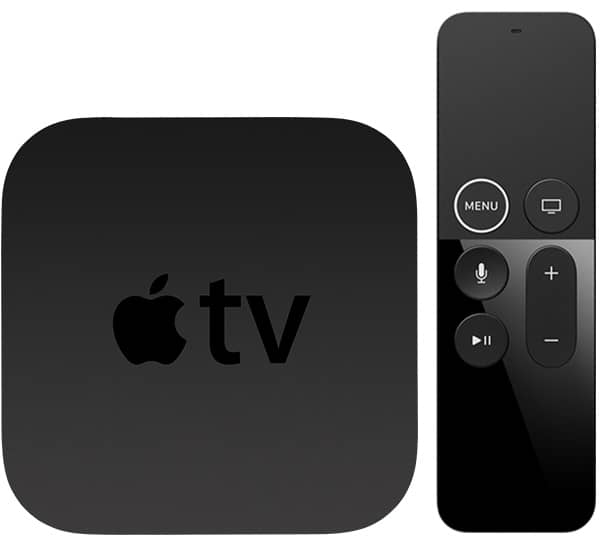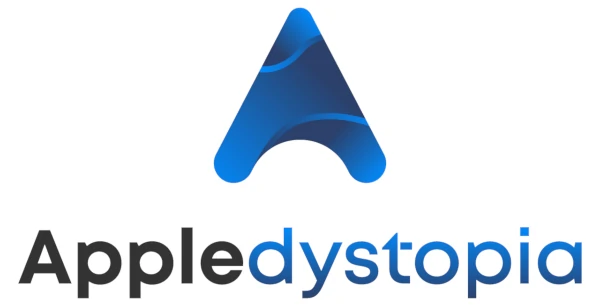

October 18, 2022 at 2:07 p.m.
- Apple TV refers to both a video streaming device and a cross-platform video streaming app.
- Apple TV+ is a video streaming service similar to Netflix, offering content to paid subscribers.
- Viewers can use Apple TV+ and the Apple TV app on a variety of devices.
- The Apple TV device, which runs on tvOS, is like an iPhone connected to your television.
- Apple TV device owners can install apps from the tvOS App Store, enabling gaming, entertainment, shopping, and other interactive content on flat-screen TVs.
What is Apple TV?
Apple is known for generating a reality distortion field using innovative marketing. Apple TV, however, seems to be a group of products that escaped Cupertino’s gravitational pull. Confusing users for over a decade, most are unsure precisely what Apple TV even means.
Apple TV refers to both a series of TV streaming devices and a relatively new TV streaming app. The streaming boxes launched over thirteen years ago and are the original Apple TV units. The app, debuting in late 2016, works across almost every Apple and several third-party devices, including select Samsung and LG smart TVs and Windows computers. It serves as a portal for streaming media, unifying various channels and providers under one app.
First, Second and Third Generation Apple TV Devices
The first Apple TV, debuting in 2007, was a device similar to TiVo. Users connected the console to their cable television system and essentially used it as a DVR. They could also purchase content from iTunes. Support for YouTube eventually emerged with an update. Other than that, the device offered little else.

In 2010, Apple launched the next generation of Apple TVs. Stripped of its hard drive, the unit only offered 8GB of flash storage, which was ample, given its capabilities. The tiny device, not much bigger than a hockey puck, only provided a handful of apps at launch. Netflix and YouTube were the only third-party streaming apps, with the bulk of its functionality dedicated to iTunes transactions.

Over time, the second-generation Apple TV matured and offered more third-party content. Hulu, HBO, and other providers developed channels (not apps) in close partnership with Apple. AirPlay enabled users to beam content onto their TV long before Chromecast existed.
The third-generation Apple TV was a modest improvement over its predecessor. It sported a slightly more advanced A5 processor and offered full 1080p resolution. Other than that, it was the same user experience. The Home Screen was a fixed grid of icons, managed mostly by Apple. They eventually added a way for users to show and hide icons. Without an App Store, Apple TV was severely limited.

tvOS and the App Store Come to the Fourth Generation Apple TV
The fall of 2015 marked a massive shift for Apple TV. For far too long, Cupertino ignored the device, as competitors like Amazon and Google delivered more capable TV streamers. To keep up with the competition, Apple launched the fourth-generation Apple TV.

Apple’s 2015 TV streaming device ran on a new operating system — tvOS. A variant of iOS, tvOS is essentially the iPhone’s operating system repurposed for the big screen. This was a wise move, as it enabled iOS developers to repackage their apps for Apple TV easily.
Unfortunately, for Apple, the fourth-generation Apple TV never really caught on. Due to its exceptionally high price tag, consumers opted for cheaper devices from Roku, Amazon, and Google.
Apple’s fifth-generation devices, known as Apple TV HD or 4K, offered higher resolution in a more expensive model, to support newer televisions. Much like the third-generation Apple TV, it was a modest refresh of its predecessor.

2021 saw the introduction of a whole new Apple TV, complete with a redesigned Siri remote and A12 Bionic processor. Some end users experienced a lot of problems with the Touch surface on the original Siri remote. Apple acquiesced and embraced contemporary user interface norms, creating a more rational and usable remote. While the remote still retains its Touch surface, users can opt to control their Apple TV with directional buttons as well.
Just recently, Apple announced a refresh of Apple TV 4K for 2022. This is quite surprising, as the product usually isn’t updated this often. The new unit looks exactly like the previous version, however, with an A15 Bionic chip, it’s far more capable for running apps. If you’re just going to watch TV shows and movies, the 2021 model is fine. If you’re interested in gaming or other app experiences, Apple’s newest TV device is a great option at an excellent price.
Apple TV: The App
Apple TV is both a device and an app. It’s unclear why Apple overloaded the term “Apple TV” with so many meanings. The company may seek to confuse customers, hoping they’ll take a trip to the Apple Store. Apple’s restrictive product naming conventions most likely prevent differentiation of the app and the device, doubling its marketing impact.
The Apple TV app is entirely free and works on a variety of devices. Every Apple device features the Apple TV app. Additionally, select third-party devices from Amazon, Roku, Sony, Samsung, Vizio, and LG feature the Apple TV app.
Serving as a content portal, the Apple TV app neatly unifies shows, movies, networks, and streaming providers under one interface. It’s a way for Apple to promote its own content, even if you’re using the app to watch another network or streaming provider. The strategy enables Apple to elbow its way into your living room.
Apple’s typically closed ecosystem only opens when it experiences difficulties gaining market traction. Apple Music is available on Android and Windows devices because Apple must compete with Spotify, Amazon Music, and others, offering music streaming on various devices.
Apple TV+ is a Video Streaming Service
Adding to the confusion, Apple recently launched Apple TV+, a premium video streaming service similar to Netflix or HBO NOW. Apple TV+ features original shows and movies, with limited content.
At $4.99 a month, the service aims to complement Netflix and other streaming providers rather than directly compete. Apple TV+ doesn’t offer a lot of content; however, Apple seeks to woo subscribers with must-see TV shows and movies.
So far, Apple TV+ original programming hasn’t garnered many Oscars or Emmys, unlike Netflix and HBO. Although Apple TV+ is too new to have made it to the Academy Awards, it has so far earned one Emmy. Despite the service’s novel status, the company has invested heavily in producing original content. For now, Apple is boosting subscriptions with a free year for those who buy most new Apple devices. It’s unclear how many people will continue with a paid subscription, as a plethora of options and a struggling economy may encourage cancellations.
Which Apple TV Will You Choose?
As an early adopter of Apple TV way back in 2010, I no longer use the device. There are so many ways to access content that purchasing a $150 device is superfluous. My Windows laptop has an HDMI port, which I can easily connect to a TV. With this setup, I can access more media than any Apple product, including Apple TV. Many smart TVs already offer the ability to run streaming apps, which reduces demand for Apple TV.
Apple TV, the device, makes sense for large families steeped in the Apple ecosystem. Even for most families, Apple TV is not a compelling replacement for their cable box. This is why Apple and the entire industry have been struggling. Sweetheart deals between networks and the cable industry make it difficult for most to cut the cord. Families that pay over $100 a month for cable don’t want to invest in Apple TV. At best, it’s an adjunct for cable.
Apple TV, the app, is an optimal solution for those who appreciate Apple’s usability and ecosystem. It elegantly unifies cable TV, subscription services, and a la carte content. Users can follow shows across devices, making it an ideal fit for those who watch TV in multiple locations.
If you’re a fan of Apple’s original programs like See, The Morning Show, and other shows, Apple TV+ is worth the small monthly fee. For now, the strategy doesn’t seem to involve replacing or competing with Netflix. Instead, Apple hopes their original programming will encourage you to spend less than $5 a month for a subscription.
Overall, Apple’s TV strategy is sound; however, its marketing is confusing. Apple TV is both a device and an app. Apple TV+ is a video streaming service. Perhaps Apple will yet again repurpose the Apple TV moniker.


